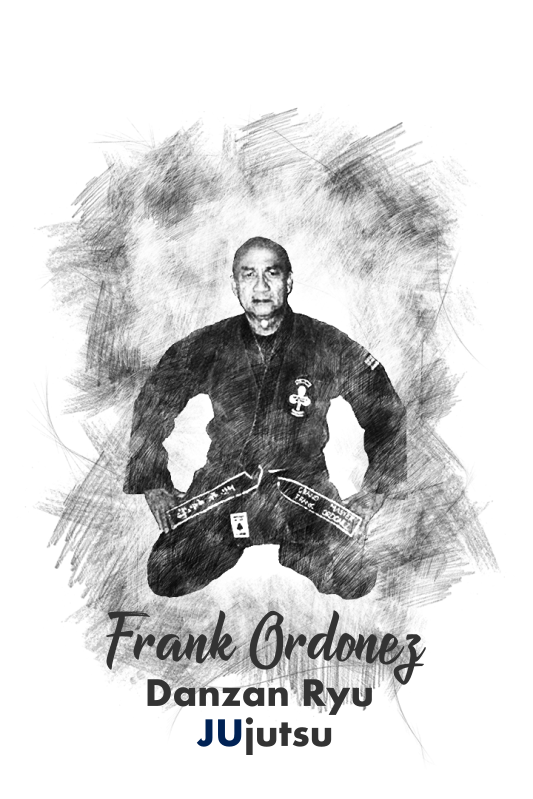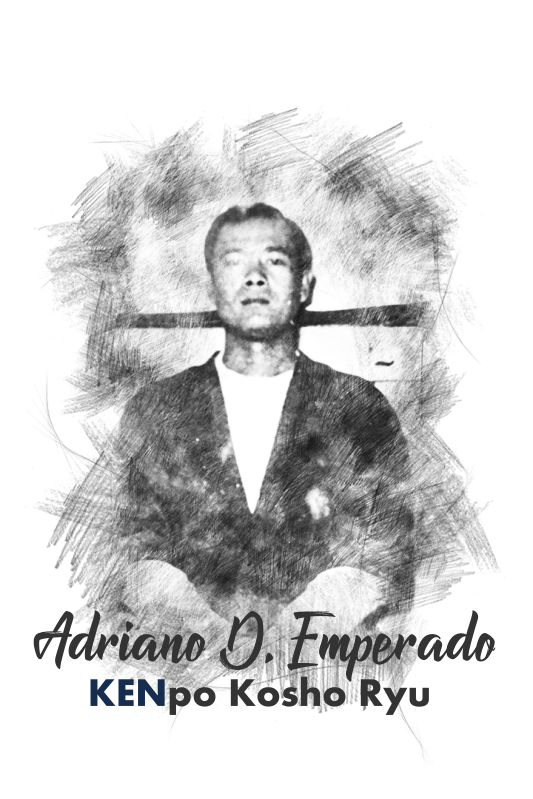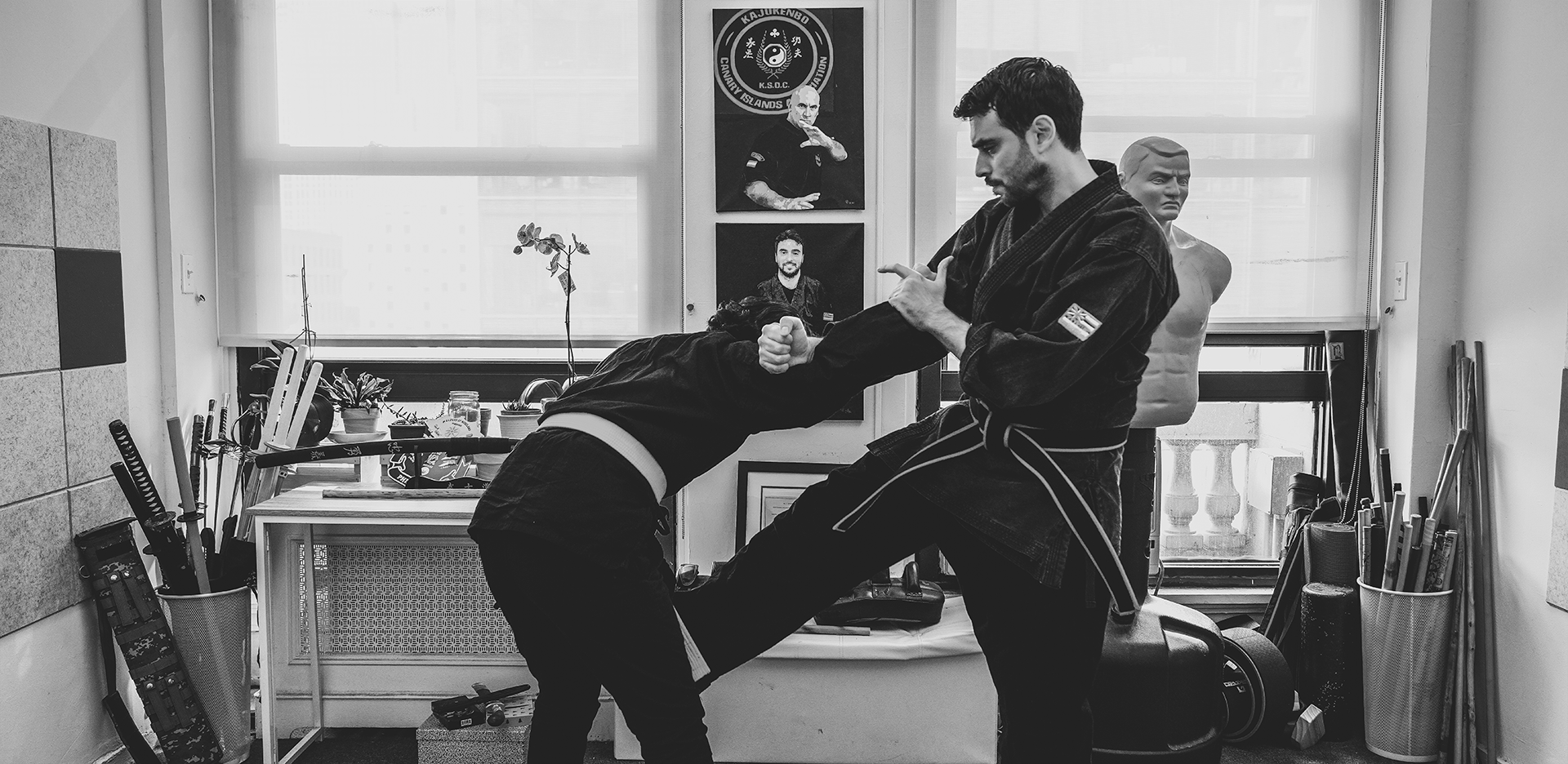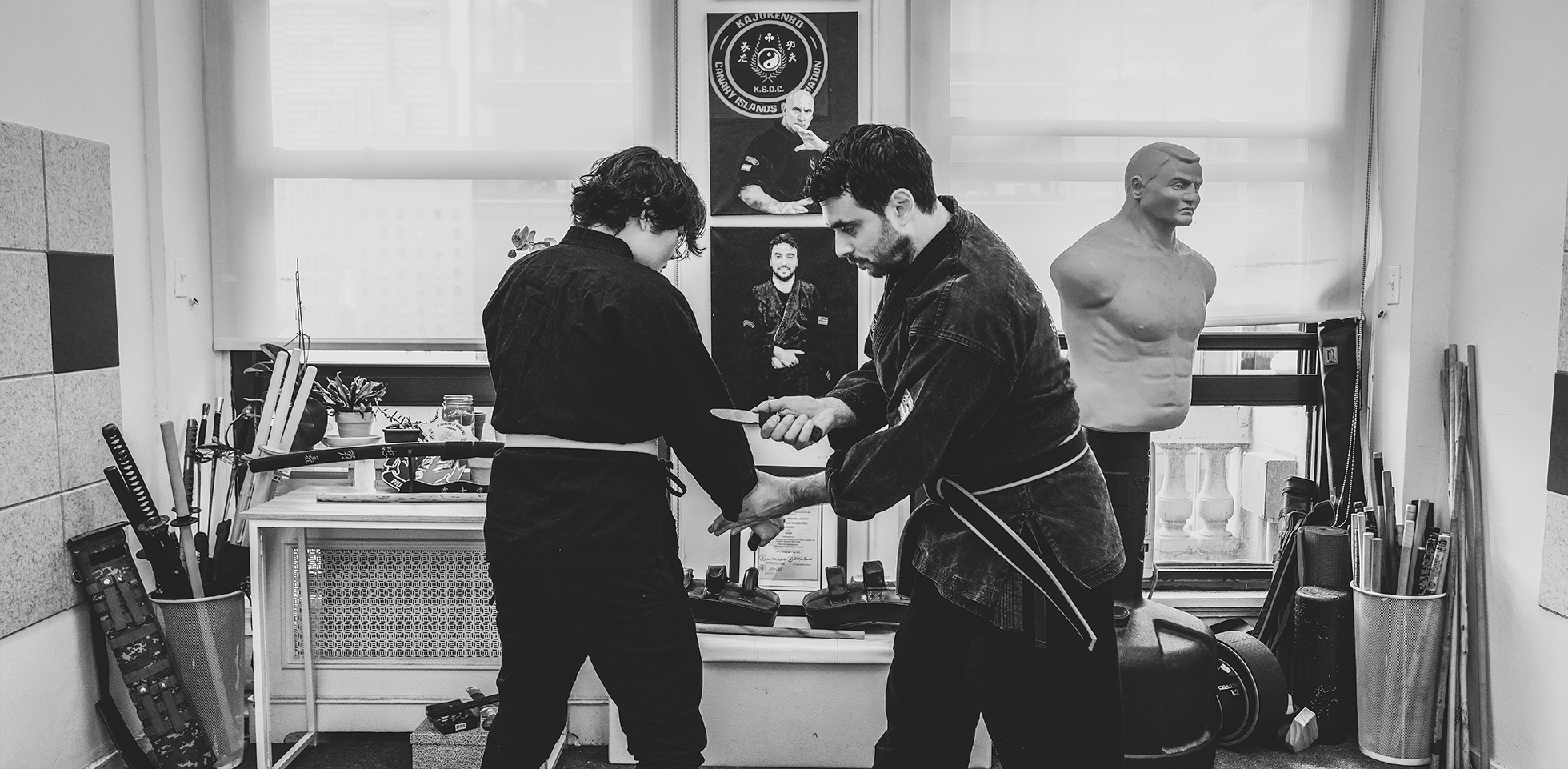Kajukenbo is an American hybrid martial art. It was founded in 1947 in the Palama Settlement on Oahu, Hawaii. In the late 1940s, the Palama Settlement was a violent area. Due to this environment, five martial artists from varying backgrounds came together with the goal of developing an art that would be practical and effective on the street, each with a different specialty, and its name (Kajukenbo) comes from the various arts from which its style is derived:
Peter Young Yil Choo — Tang Soo Do Korean KArate and Boxing
Joseph Holck — JUdo and Danzan Ryu JUjutsu
Adriano Directo Emperado — KENpo (Kosho Ryu) and Eskrima
Frank F. Ordonez — Danzan Ryu Jujutsu
Clarence Chang — Sil-Lum Pai Kung Fu (also known as Chinese BOxing)





In its conception, the founders followed a simple rule, if a technique worked consistently on the street (or against one another), then it stayed in the system, if it did not, it was discarded. This allowed the style to maintain its self-defense focus, while covering limitations found within each of their traditional arts.
Kajukenbo training incorporates a blend of striking, kicking, throwing, takedowns, joint locks and weapon disarmament.
Today, Kajukenbo is practiced all over the world in many different branches. In contrast to many traditional martial arts, students are not required to mimic their teacher, but are encouraged to develop their own “expression” of the art.

My name is Carlos Navarro and I started training martial arts when I was little. I practiced Aikido for several years. Later I got captivated by other forms of combat and I trained Full Contact, Kick Boxing and Thai Boxing.
For several years I trained Capoeira and gymnastics which helped me be more aware about body movement, and the importance of flexibility.
I started practicing Kajukenbo and Filipino Martial Arts in 1998 from my master Tomás Encinoso Armas, and I haven’t stopped since then. I try my best to keep learning from other masters and other martial arts to enrich my Kajukenbo. Two of the arts that have contributed to my growth greatly are Balintawak Arnis Cuentada and Doce Pares (World Concept).
I personally believe that there is no such thing as “better martial art” or “most effective method”. Each system can bring you benefits and can help you develop some skills. And to me that flexibility and constant curiosity to find what is useful is the true meaning of Kajukenbo.
I’m currently practicing in New York City. If you are curious or just want to practice with us you can email me at kajukenbonyc@gmail.com

As a self defense system, kajukenbo not only focuses on empty hand concepts. We pay close attention to the use of weapons (sticks, knives, improvised weapons), always from a self defense point of view.
The following are a compilation of very short clips where I show some techniques. Most of them just reflect some moves. I hope you enjoy them!
Empty hands refers to any work where the defendant does not use any type of weapon (even if the attacker may use one) In Kajukenbo, the concept “empty hands” includes throws, punches, kicks, blocks, locks…
One of the key issues in Kajukenbo is to identify and distinguish the different distances you may find in a confrontation, as well as training coordination, timing…
Improvised Weapons is the use of everyday objects as self defense tools. Although it might help you develop more confidence in your techniques, a work of caution is needed. Improvised weapons are not a substitute for your training but a complement of it.
This is a very complicated but necessary part of any martial art training. In it we try to show the use of knife for self defense purposes. We also try to show the reality of different scenarios to make the student more mindful about the danger of having an altercation with a knife, whether the other person is carrying one or we are the ones carrying. It´s also important to have an understanding about what constitutes self defense from a legal point of view. We cannot stress this enough.
Keep in mind that some of this training is oriented to military personnel and law enforcement.

Tomás Encinoso with Sifu Carlos Navarro, claudette delacerna and grandmasters nick elizar and bobby taboada
Arnis, also known as Kali or Eskrima, is the national sport and martial art of the Philippines. The 3 terms are interchangeable terms for the traditional martial arts of the Philippines (“Filipino Martial Arts”, or FMA) that emphasize weapon-based fighting with sticks, knives, bladed weapons, and various improvised weapons as well as “open hand” or techniques without weapons.
Venancio “Anciong” Bacon was born into in Carcar Cebu on October 15, 1912, during a turbulent time. Bacon would become one of the most important and influential eskrimadors in history through the development and testing of his own personal style of eskrima which we now call Balintawak.
Bacon’s style was a direct reflection of his training but also his stature. At 5′ 2″ and 120 pounds he was not a man who relied on strength or size to overwhelm his opponents.
Grand Master Bobby Taboada was raised in Cebu City, Philippines, a thriving martial arts culture and the birthplace of Balintawak. After studying karate, boxing, and other fighting arts, GM Taboada was introduced to the Balintawak school founded by the Great Grand Master Venancio “Anciong” Bacon, headed at the time by Grand Masters Teofilo Velez and Jose Villasin. GM Taboada was trained in the “old school” ways of stick fighting, enduring physical abuse and constant live stick training with the masters.
I started practicing Balintawak under my Kajukenbo instructor Sigung Tomas Encinoso Armas, in the Canary Islands (Spain). When I move to the United States I started teaching Kajukenbo and sharing with my students what I remembered from Balintawak. I was very fortunate to be accepted and personally trained by Bobby Taboada himself.
In October 2018 I obtained my level 6, also known as “Completion of the Art” in Balintawak.
To know more about Balintawak Cuentada here in NYC you can go to our other website www.balintawaknyc.com or click here.

Do you want to practice Kajukenbo but live far from a Dojo? Do you want to start your own training group?
First of, I would like to clarify that this program is heavily influenced by Filipino Martial Arts, especially the skills related to Knives and Sticks. As part of my training since the beginning, I wanted to share what I have been able to learn (and continue to gather) throughout the years. The program is divided by levels or belts.
We always start with White Belt. This level is dedicated to the fundamentals skills you need to develop before starting to even punch or kick (basic stances, movements, how to fall…) The second level (Yellow Belt ) is dedicated to striking in long and medium range. The third level section (Orange Belt) is dedicated to striking in medium to short range. The fourth level section (Purple Belt) is dedicated to grappling while standing. The fifth level section (Blue Belt) is dedicated to grappling on the ground. The sixth level section (Green Belt) is dedicated to the use of Sticks. The seventh level (Brown Belt) is dedicated to Knives. The eighth level (Black Belt) is dedicated to Improvised Weapons and Situational Awareness.
I have also added a section for Seminars and Deep Dives. In it, you will see techniques out of seminars or classes. I will show you a different perspective about the skills you learned on your requirements, or I will show you different techniques or elements that are not going to be part of the curriculum. Specific training. From knife training, improvised weapons to stick fighting and empty hands training. More content will be added to this section regularly.
Lastly, I would like to thank all my students for helping me grow as a teacher and to my teachers for sharing your knowledge with me.
We are currently located at 501 5th avenue, Suite 2007 on the 20th floor. We are starting a group in Brooklyn and another one in Queens very soon. For availability, and interest in training, please contact me at kajukenbonyc@gmail.com.
I hope to hear from you soon.
Please, stay safe.